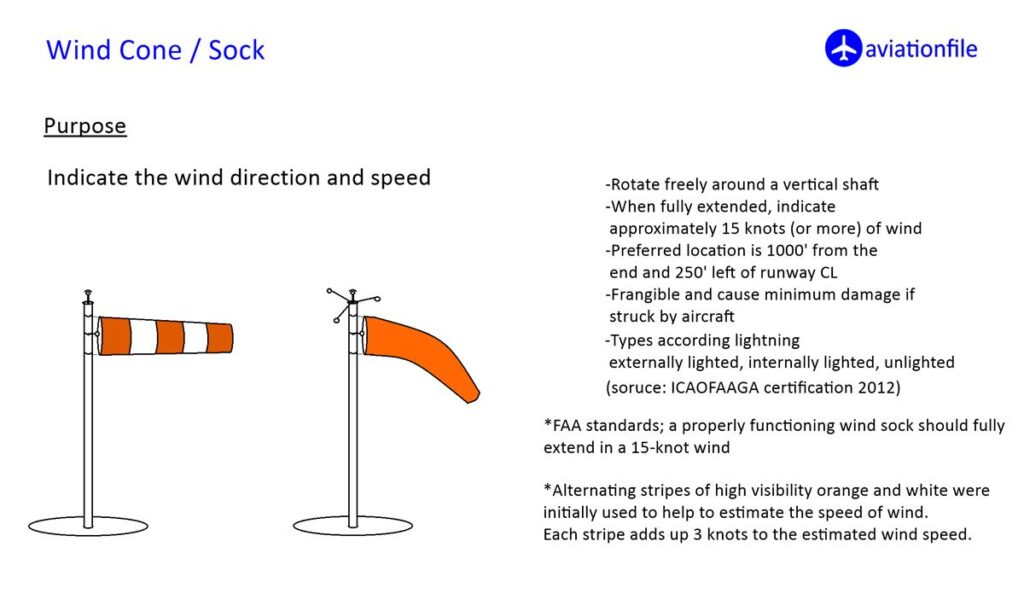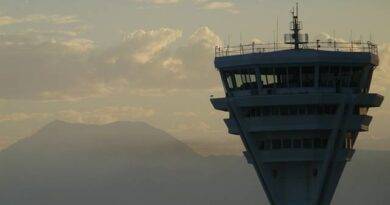Wind Cone – Windsock
Wind cone / windsock is a tool used to determine the direction and speed of the surface wind. When it is filled with air, it becomes parallel to the ground. It is placed on a mechanism that rotates in the direction of the wind. They are made from fabric or fabric like materials. It usually has a wide mouth that meets the wind and a narrow outlet that releases the wind. They are used in many places such as chemical plants and highways where wind direction and intensity are important, especially in airports. In addition, there are wind cones that are used for traditional reasons or as a child’s toy.
Wind cones/socks are usually produced in orange, red, orange-white or red-white stripes for easy recognition. They should be hung in an open area and on a high pole so that the wind is not affected by environmental factors.
In aviation, the “surface wind” is wind up to 30 ft (10 m) above the ground. Each airport must have at least one windsock.
According to ICAO standards, aerodrome wind socks should be 3.6 m (12 ft) long and a wide mouth 0.9 m (36 in) in diameter. Its narrow and open rear end should be wide enough to allow it to be fully perpendicular (fully parallel to the ground) in 15 knots (28 km / h) wind. The pole on which it is suspended must be 6 m (20 ft) high. According to the FAA, the windsock should be able to turn into the wind at a wind of at least 3 knots (5.6 km / h).
The aerodrome wind socks can be illuminated with internal or external lamps so that they can be used in night conditions.
According to ICAO/FAA Airport Certification Workshop – INSPECTING TRAFFIC AND WIND INDICATORS
WIND CONE SPECIFICATIONS
Supplemental wind indicators should
-Be located 500′ – 1500′ from the runway end
*Be on the left side of landing aircraft unless special circumstances exist
-Be no closer than 250′ from the runway CL
Preferred location is 1000′ from the end and 250′ left of CL

For more articles click.


